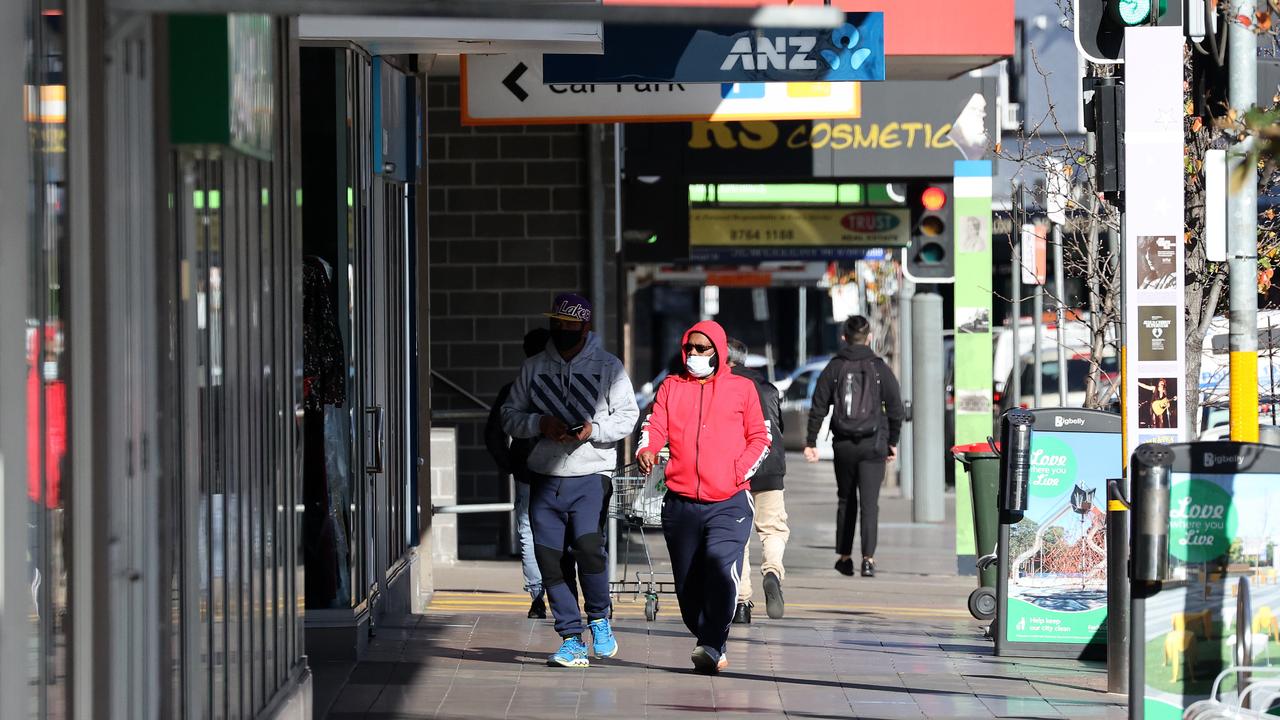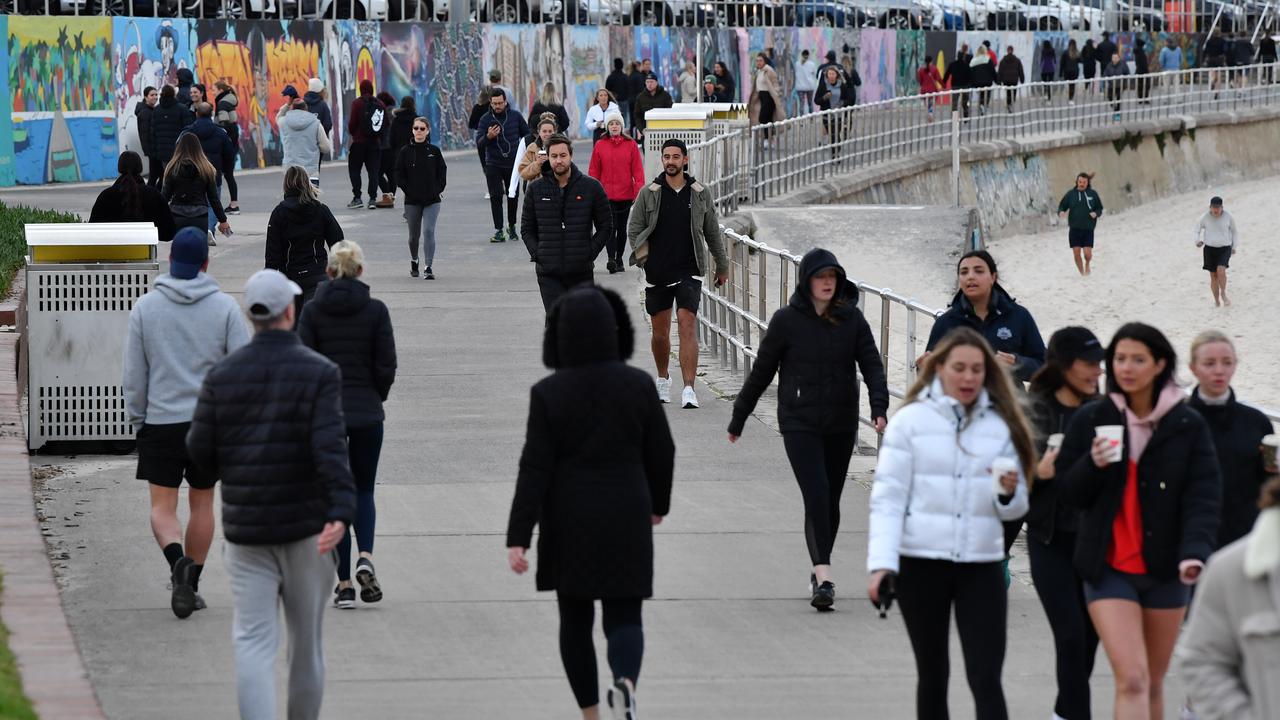What Sydney’s last resort lockdown could look like
Harsh new measures may be required in NSW to get Covid-19 cases down. Here’s what desperate authorities could still do.
Further restrictions could be introduced in Greater Sydney as Covid-19 cases continue to rise despite a lockdown.
NSW recorded 124 cases announced on Thursday – the highest number yet in the current outbreak – leading to concerns that further restrictions may be needed.
NSW Premier Gladys Berejiklian acknowledged it was not yet clear whether the latest rules, including the closure of construction sites, would see cases finally dip. She said authorities should have a better picture over the weekend or early next week.
The state’s stubbornly high Covid cases could see authorities turn to harsher restrictions, partly aimed at ensuring compliance of stay-at-home orders.
Sadly, the numbers of people who were infectious while in the community remains “much too high”, with around half of all cases circulating before testing positive.
On Thursday, at least 70 cases had spent some time in the community while infectious, with another 17 cases still under investigation.
In contrast, almost all cases in Victoria (24 of 26 cases) on Thursday had been in isolation for their entire infectious period.
In order for NSW to get its numbers down, experts say there are still some measures that authorities could introduce. Here are some options still available.
Limiting travel to 5km, only leaving the house three times per week
Sydneysiders are restricted to a 10km limit for exercise but there is still nothing to stop someone in Cronulla deciding to visit their favourite Bunnings store in Parramatta.
Burnet Institute epidemiologist Professor Michael Toole said limiting travel, whether that be for 5km or 10km, would help reduce movement in Greater Sydney.
South Australia has introduced a 2.5km limit but Prof Toole said it was unclear whether this would be more effective as Burnet modelling only looked at restrictions put into place during Victoria’s second lockdown last year.
He said Victoria’s 5km limit was one of a range of measures put in place that worked to bring down cases, although unfortunately it was not possible to isolate the particular impacts of specific restrictions.
However, Prof Toole said it was important that authorities focus on increasing the level of compliance with stay-at-home orders.
He pointed to recent University of Sydney modelling measuring mobility up until July 13 that showed only 40 per cent of Sydney residents were staying home and reducing social interactions by one-tenth.
RELATED: NSW flags tough new mask rule

That modelling showed this would need to go up to 80 per cent for at least a month before cases came down to below 10 a day.
As an example, Director of the University of Sydney’s Centre for Complex Systems Professor Mikhail Prokopenko, who developed the modelling, told news.com.au if two people were living in a household, this could involve them limiting their trips outside the home to around three times a week, with only one person going out each time.
They would also need to reduce their social interactions while outside by wearing a mask, socially distancing and doing what they needed to do as quickly as possible. Exercise could be on top of this as long as they went out by themselves without any others in close proximity, although this has not been specifically modelled.
Deakin University epidemiologist Professor Catherine Bennett told news.com.au travel limit rules may help authorities enforce stay-at-home orders but would not necessarily bring the outbreak under control.
While travel limits could help stop the virus leaking out of cities and into regional areas, Prof Bennett doesn’t believe they make much of A difference within cities.
“If someone who is going to break the rules wants to visit someone they shouldn’t, then they won’t care about a 2.5km rule,” she said.
She noted that any travel limit would also not apply to essential workers so cases could still continue to circulate if the virus was still being spread in workplaces.
“Workers could still be crossing the city and bringing cases home (which is where the majority of the spread was happening at the moment), she said.
She said the focus should be on where the embedded transmission was happening and how it could be controlled.
“I think we’ve got to be careful about what rules there are and why,” she said.
“(A travel limit) could add to a lot of people feeling fearful, anxious or isolated.”
Evening curfew
During the height of Melbourne’s stage 4 lockdown restrictions, residents were not allowed to leave their homes after 8pm unless it was for essential work, medical care or caregiving.
University of NSW Professor Mary-Louise McLaws, who is an adviser to the World Health Organisation, said a curfew in hot spot areas of Sydney could be useful.
“A curfew reminds people that we’re in dire straits and we can’t go out and you are less likely to have people not abiding by the rules, and that’s why Victoria brought in curfews,” she said.
But Prof Toole said curfews probably were more about symbolism than infection control, and believed a 5km travel limit should be considered before a curfew was.
Masks outdoors
The images of Sydneysiders flocking to places like Bondi Beach and Manly for their daily exercise have disturbed Prof Toole who said that Delta cases in Melbourne had shown outdoor transmission was occurring.
He said cases had been discovered among people who attended outdoor sporting events including an AFL game at the Melbourne Cricket Group (MCG) and a rugby game at AAMI Park stadium. Those infected had not been close to positive cases at these venues but had still managed to get infected.
“We know that outdoor transmission occurs,” Prof Toole said.
NSW chief health officer Dr Kerry Chant has said that people should wear masks outdoors when they can’t socially distance and Prof Toole said this should apply to the crowds at Bondi and Manly, as many groups appeared not to be socially distant.
Prof McLaws has also pointed out that people walking their dogs or just going for a walk should also be wearing a mask, as walking was “not exercise”.

Fast Covid testing at workplaces and at home
Prof Bennett believes authorities should be honing in on where transmission was occurring outside of households – and that was likely going to be at workplaces.
“Workplaces might not be able to close down so they should look at how they can operate more safely or whether antigen testing can be used to pick up infections on the day,” she said.
Prof McLaws agrees and said some rapid Covid tests had an accuracy of 99.96 per cent when testing people in the first five to seven days of their infection, before they got symptoms.
“They stop being accurate when people become symptomatic,” she said.
She said the UK had used these tests and made them available at pharmacies, libraries and other spaces.
The tests could also be made available to households so people could get quick results rather than being forced to line up for PCR (polymerase chain reaction) testing and then waiting more than a day for the results.
Prof McLaws believes if home and work testing, as well as curfews were brought in, this should be enough to bring cases down.
Meanwhile, Prof Bennett acknowledged that none of the possible restrictions were perfect but could help as long as they were targeted.
“They should focus on the remaining areas where cases are still happening,” she said.
“Case numbers are less important than the transmission that is driving that.”




